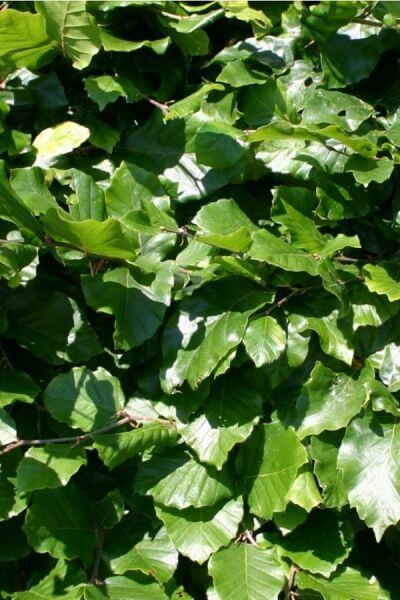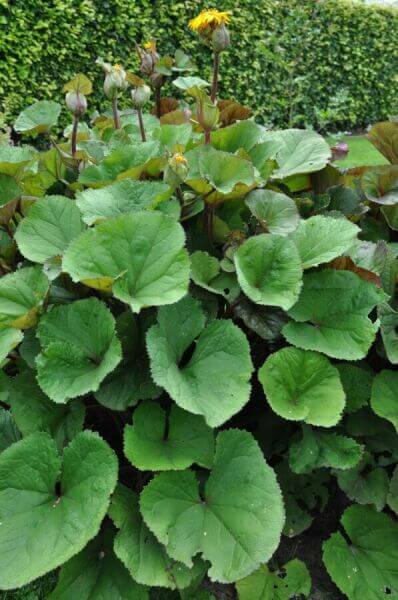Hedge Plants For Rustic Gardens
Hedge Plants For Rustic Gardens
Blog Article
Best Hedge Plants For Mixed Borders
Improve your garden's appeal with lavish hedge varieties such as Yew (Taxus), Thuja, Laurel, Photinia, and Bamboo, commemorated for their structural integrity and ecological benefits.
Yew and Thuja supply evergreen protection and winter resilience, while Laurel offers quick growth and broad, fragrant leaves.
Photinia includes seasonal beauty with its dynamic red foliage, and Bamboo lends a low-maintenance, serene atmosphere.
These hedges improve air quality, reduce sound, and create tranquil, personal spaces.
Proper planting, spacing, and upkeep ensure vigorous development and ecological harmony.
Check out how these lavish varieties can elevate your garden's appeal and wellness.
Key Takeaways
Transform Your Garden With Lush Hedge Ranges
- Select Yew for its thick, evergreen development and unrivaled durability.
- Go with Laurel for its quick growth and broad leaves, ensuring quick personal privacy.
- Pick Photinia for its lively seasonal foliage, which turns a striking dark red.
- Utilize Bamboo for a low-maintenance, winter-hardy hedge with aesthetic appeal.
- Space plants 2-3 per meter and prune routinely for ideal development and health.
Popular Hedge Plants
When changing a garden with rich hedge ranges, it's necessary to think about popular hedge plants such as Yew, Thuja, Laurel, and Photinia due to their special characteristics and benefits.
Yew (Taxus) is highly esteemed for its longevity and dense, green growth, making it a prime choice for enduring landscapes.
Thuja is noted for its evergreen foliage and robust winter season strength.
Photinia includes seasonal vibrancy with red leaves that darken with time, developing vibrant visual appeal.
Laurel uses quick development and aromatic, broad leaves, suitable for quick privacy.
Additionally, Bamboo is an excellent option for atmosphere, providing a low-maintenance, winter-hardy choice that enhances the garden's aesthetic with its elegant, swaying walking canes.
These choices accommodate a variety of horticultural needs and choices.
Advantages of Garden Hedges
Garden hedges provide a wide variety of benefits, making them a valuable addition to any landscape. These natural barriers are cost-effective to carry out and offer significant wind defense, boosting air flow and contributing to sound reduction. The thick foliage of hedges like Thuja and Beech makes sure privacy by blocking exposure, creating a tranquil and secluded environment.
Hedges also play a vital role in microclimate guideline, offering a stable environment that cultivates plant growth and decreases temperature variations. Their complex leaf structures filter pollutants, enhancing air quality and contributing to a much healthier garden ecosystem.
Furthermore, hedges master noise decrease, soaking up and deflecting acoustic waves to lower ambient noise levels. This double performance of offering both visual and acoustic privacy enhances the overall harmony and visual appeal of any garden.
Planting and Maintenance Tips
For an effective hedge, precise preparation of the planting location is important. Ensure the soil has appropriate pH and drain to support strong root development.
Area the plants appropriately for the selected species. Water the hedge often throughout its initial growth stage, changing as required with seasonal changes.
Execute a organized pest control and illness avoidance strategy, utilizing organic or chemical treatments when required. Regularly examine for aphids, mites, and fungal infections.
Apply mulch to keep moisture and reduce weeds. Seasonal pruning promotes thick growth and air blood circulation, important for plant health.
Following these standards will assist you cultivate a lively, well-maintained hedge that improves the charm of your garden.
Spacing and Cutting Standards
Spacing and Cutting Standards
Correct spacing and cutting are crucial for cultivating healthy, visually appealing hedges. Adequate spacing guarantees each plant receives adequate nutrients, light, and airflow.
Follow these guidelines for ideal hedge upkeep:
- Spacing: Position hedge plants 2-3 plants per meter to motivate robust growth.
- Pruning Methods: Regular pruning is important for preserving preferred hedge height and shape. Trim new growth in summer season and cut down older wood throughout winter season.
- Seasonal Care: Adjust trimming methods and schedules according to seasonal requirements to ensure plant health.
- Hedge Height: Frequently display and cut to preserve the preferred hedge height and attain consistent visual appeals.
Following these steps will guarantee your hedge grows, boosting both the appeal and performance of your garden.
Choosing the Right Hedge
Choosing the Right Hedge
Picking the appropriate hedge includes examining elements such as mature height, foliage density, and environmental strength. Successful hedge plant selection needs understanding each species' development qualities and site-specific versatility.
For example, Yew (Taxus) uses outstanding longevity and thick growth, while Thuja is significant for its winter durability. Furthermore, considering maintenance requirements is essential; fast-growing species like Laurel or Privet need routine cutting, whereas low-maintenance options like Bamboo or Ivy may be more effective for those seeking very little upkeep.
Ecological factors such as soil type, light schedule, and moisture conditions should likewise guide the choice process. This mindful technique guarantees the picked hedges will grow, supplying both visual and practical advantages to the garden landscape.
Delivery and Planting Suggestions
To ensure your hedge plants prosper, they should be delivered by specialized carriers and planted promptly upon arrival.
Follow these important steps for effective planting:
- Soil Preparation: Improve the soil with organic matter to improve drain and nutrient material.
- Planting Depth: Create a trench twice the width and equivalent to the depth of the root ball.
- Watering Strategies: Water thoroughly after planting, keeping the soil consistently damp but not filled.
- Mulching: Apply a layer of mulch to retain wetness and suppress weeds.
Customer Support and Service
Provided the important function of prompt help in horticultural pursuits, our customer assistance team is readily available six days a week through telephone, email, and social networks to use skilled recommendations and promptly deal with any issues. Their commitment to fast response times guarantees consumer complete satisfaction by dealing with questions connected to plant health, ideal planting methods, and upkeep schedules.

-----------------
Within 24 hours
This extensive support group, reinforced by an excellent 9.3/ 10 customer rating, highlights our dedication to enhancing the gardening experience for each customer.
Frequently Asked Concerns
For How Long Does It Take for Hedge Plants to Establish?
Hedge plants normally require one to 3 years to end up being completely developed, with the specific period differing by species and growing conditions.
Efficient care during this vital period is important for robust development. Constant watering, alert weed control, and appropriate fertilizer application are pivotal in promoting strong root development.
For example, fast-growing types like Laurel might develop quicker, while slower-growing varieties such as Yew may take longer. Persistent upkeep speeds up the establishment process, resulting in healthy and thick hedges.
What Are the Best Hedge Plants for Personal Privacy?
The concern of the best hedge plants for privacy involves examining evergreen and deciduous alternatives.
Evergreen hedges like Thuja, Laurel, and Cypress supply year-round protection, making sure continuous privacy.
On the other hand, deciduous hedges such as Beech provide seasonal personal privacy, shedding leaves in cooler months.
Key maintenance pointers for personal privacy hedges consist of routine hedge plants cutting, fertilizing in spring, and correct spacing-- normally 2 to 3 plants per meter.
Furthermore, consistent watering and persistent weed elimination are crucial for promoting healthy, thick growth.
Can Hedge Plants Attract Wildlife to My Garden?
Yes, hedge plants can bring in wildlife to your garden by providing essential advantages like shelter, food, and nesting sites, thereby boosting local biodiversity. For instance, yew, holly, and laurel are excellent for bring in birds, while ivy supports a variety of pests.
However, it's important to keep in mind that there are some drawbacks, such as increased upkeep to handle insects and regular maintenance. Carefully picking and keeping hedge varieties can assist balance these drawbacks and benefits, ultimately fostering a dynamic and sustainable ecosystem in your garden.
Exist Any Flowering Hedge Plants Available?
Yes, there are flowering hedge plants available that can improve the beauty of your garden.
For example, Elaeagnus, also known as Olive Willow, produces aromatic white flowers in the fall, including a touch of elegance.
Photinia, another popular option, showcases dynamic red leaves that develop into a rich green, developing a dynamic visual impact throughout the seasons.
To ensure these plants grow, it's important to practice correct pruning techniques and seasonal maintenance, such as trimming new development in the summertime and cutting down in the winter season.
These procedures will help preserve the health and visual appeal of your blooming hedges.
How Do I Avoid Pests in My Hedge Plants?
To prevent insects in hedge plants, employ natural insect control methods and maintain correct hedge care. Present beneficial bugs like ladybugs, which take advantage of harmful insects, to produce a balanced environment.
Regularly inspect your hedges for indications of invasion and without delay eliminate any afflicted parts to avoid the spread. Guarantee the health of your hedges by applying well balanced fertilizers and providing appropriate water.
Use mulching to keep soil wetness and proper spacing to reduce plant stress and promote robust growth. These practices collectively assist in lessening insect concerns and maintaining a healthy hedge.
Conclusion
In essence, picking the ideal hedge varieties such as Yew, Thuja, and Laurel can transform any garden into a relaxing sanctuary. These plants offer year-round greenery, enhance visual appeal, and offer useful advantages like noise reduction and wind protection.
Correct planting strategies, accurate spacing, constant watering, and seasonal trimming are vital for optimum development.
Reliable shipment services and expert customer assistance ensure a seamless experience from purchase to planting, making it easier than ever to elevate your outside space.
Garden hedges use a wide variety of benefits, making them an important addition to any landscape. These natural barriers are economical to implement and supply significant wind security, enhancing air blood circulation and contributing to noise decrease. The dense foliage of hedges like Thuja and Beech makes sure privacy by obstructing visibility, producing a serene and remote environment.

Pruning Strategies: Regular pruning is important for maintaining wanted hedge height and shape. Cut new development in summertime and cut back older wood during winter season.
Report this page